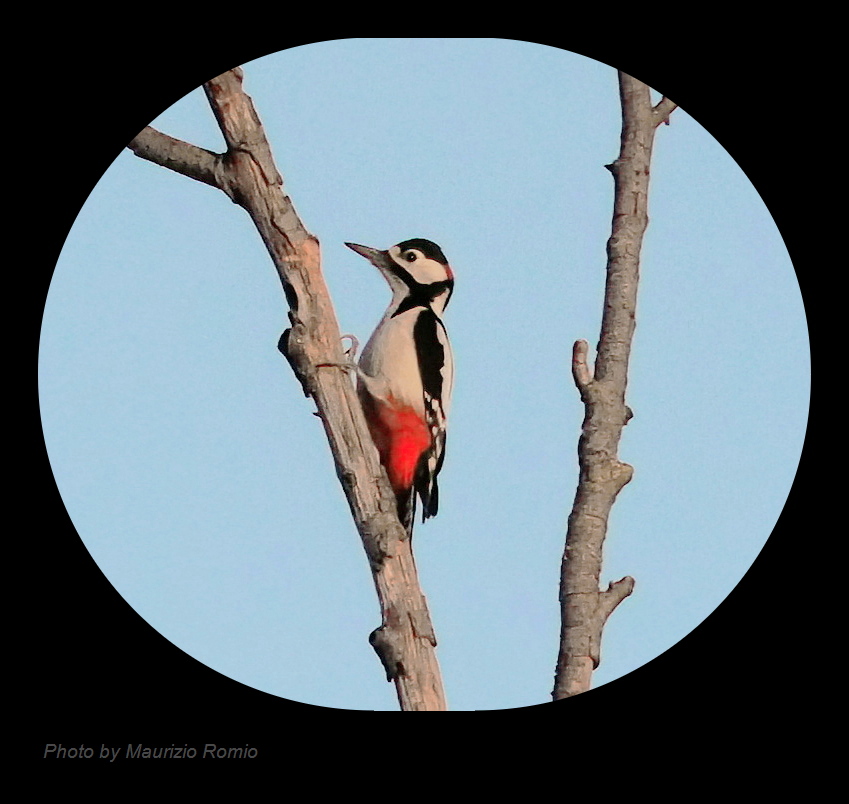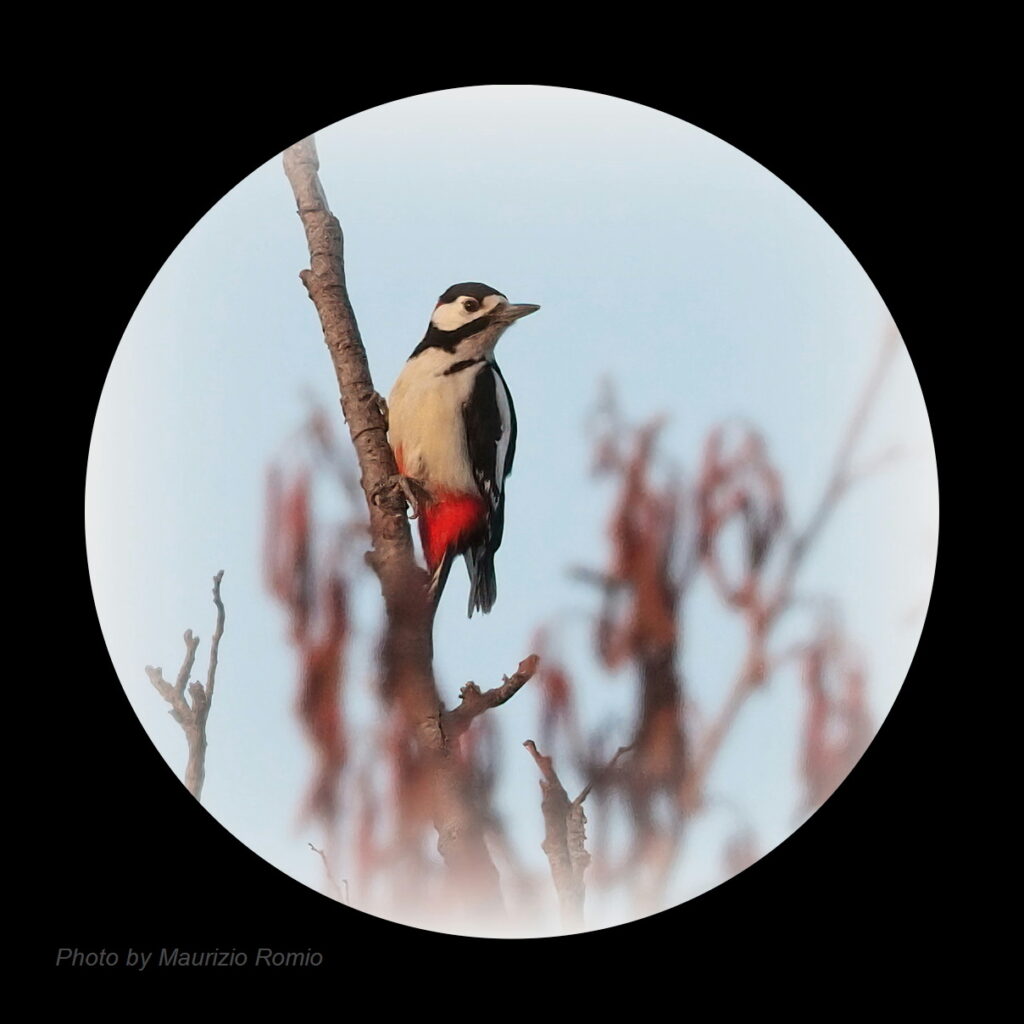
Dalla foto si possono estrapolare alcune peculiarità del Picchio Rosso Maggiore: il piumaggio bianco e nero con il sottocoda di color rosso, il robusto becco appuntito, le zampe munite di forti artigli che, come in questo caso, lo aiutano a rimanere ancorato ai tronchi degli alberi. Per riconoscere i maschi dalla femmine dobbiamo cercare nella nuca una macchia rossa della quale solo i maschi sono dotati. Nel nostro caso quindi il Picchio Rosso ritratto nella foto è un maschietto. Nei giovani esemplari la parte superiore della testa è di colore rosso e detta colorazione andrà a scomparire negli adulti.
“Nel bene o nel male”…finché “morte” non ci separi
Nel bene o nel male questo esemplare di Picchio Rosso Maggiore convive nella stessa limitata area umida, la “Boschetta” di zona Fornaci nei pressi del Comune di Costabissara in provincia di Vicenza, con lo Sparviero recensito nel post del 14/02/2023. Il problema risiede nel fatto che il Picchio Rosso rappresenta per lo Sparviere una potenziale preda. Nella stessa piccola area lo Sparviero si mimetizza mentre il Picchio Rosso si evidenzia con i suoi colori sgargianti. Probabilmente di comune accordo condividono questo piccolo lembo di natura che a stento ancora sopravvive circondato dagli elementi antropici umani sempre più invasivi.
The Red-cockaded Woodpecker
From the photo we can extrapolate some peculiarities of the Great Spotted Woodpecker: the black and white plumage with the red undertail, the strong pointed beak, the legs equipped with strong claws that, as in this case, help it to stay anchored to tree trunks. To recognize males from females we must look in the nape of the neck for a red spot with which only males are endowed. In our case therefore the Red-cockaded Woodpecker pictured in the photo is a male. In young specimens the top of the head is red, and said coloration will go away in adults.
“For better or for worse”…until “death” separates us
For better or for worse, this specimen of Great Spotted Woodpecker cohabits in the same limited wetland area, the ” Woodlot” of the Fornaci area near the Municipality of Costabissara in the province of Vicenza, Italy, with the Sparrowhawk reviewed in the post of 14/02/2023. The problem lies in the fact that the Red Woodpecker represents potential prey for the Sparrowhawk. In the same small area the Sparrowhawk camouflages itself while the Red-cockaded Woodpecker stands out with its bright colors. Probably by mutual agreement they share this small patch of nature that still barely survives surrounded by the increasingly invasive human anthropogenic element.

